19.05.2023
Adding to the grim list of record ice losses, record air temperatures and record droughts, which have all hit the headlines recently, the temperature of the surface waters of our oceans is also at an all-time high. With an El Niño looming, concerns are that we will soon be facing even worse extremes. Satellites orbiting overhead are being used to carefully track the patterns that lead up to El Niño to further understand and predict the consequences of this cyclic phenomenon against the backdrop of climate change.
The coupled ocean–atmosphere system of El Niño and La Niña, together known as the El Niño Southern Oscillation, are drivers of significant variations in global temperature and precipitation, on top of the warming trend caused by climate change.
El Niño occurs every few years when the trade winds weaken allowing warm water in the western Pacific Ocean to shift eastward, bringing with it changes in wind patterns and ocean dynamics. This can have a significant impact on weather around the world, leading to changes in ecosystems and fisheries, droughts, floods and storms, amongst others.
Climate models suggest that after three years of La Niña, which has a general cooling effect on the planet, in the next few months we will face a return to the more troublesome El Niño.
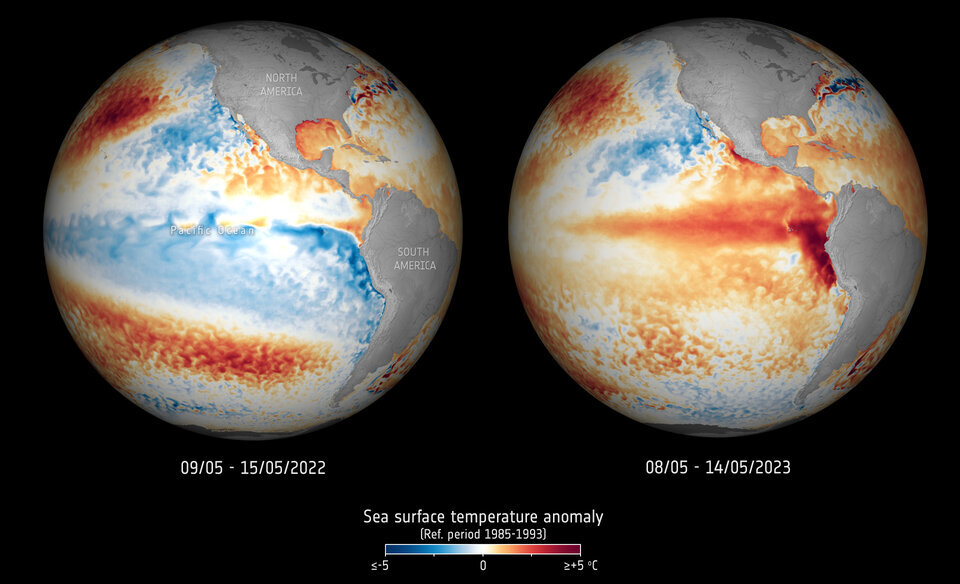
Climate change is already fuelling the recent extreme temperatures that many of us have had to deal with, so the worrying question is whether this impending El Niño will make matters even worse.
Monitoring changes in the temperature and height of the sea surface, together with the surface wind patterns that result from the interactions between the ocean and the atmosphere, helps us to understand the mechanisms that drive El Niño events.
Moreover, scientists have to take climate change into account, which is likely to amplify the extremes that this El Niño, and future El Niño events, will bring.
Satellites orbiting above are paramount to delivering the data for this kind of research because the Tropical Pacific Ocean, the home of El Niño, is so large it is difficult to monitor.
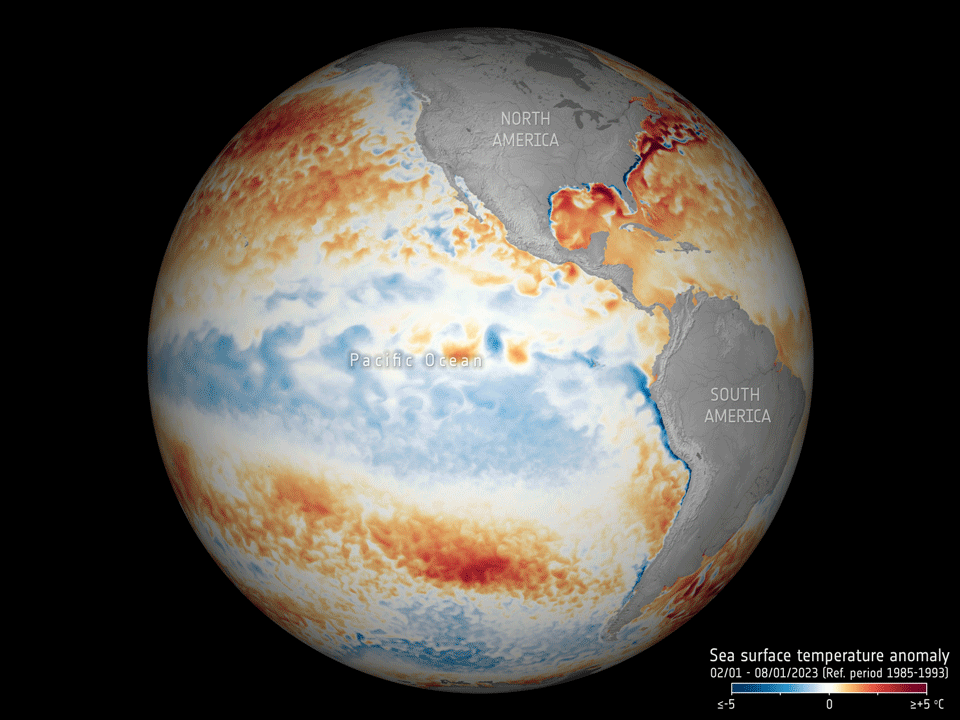
ESA’s lead ocean scientist, Craig Donlon, said, “More than 70% of our planet is covered by ocean. It plays an enormous role in the climate system.
“We all know that our climate is warming – but I imagine that most people first think of warmer air temperatures. In fact, our oceans have been soaking up much of this extra heat, keeping the atmosphere relatively cool. This has come at a cost, and we are now seeing the temperature of our oceans at their hottest since records began.”
“Scientists all over the world use Copernicus Sentinel-3 data that provides reference surface-temperature measurements together with sea-surface height data. They also use Copernicus Sentinel-6 which gives us the most accurate measurements of the height of the sea surface. When seawater warms, it expands – one of the biggest causes of sea-level rise. These complementary datasets work together to provide a unique picture of the evolving El Niño.”

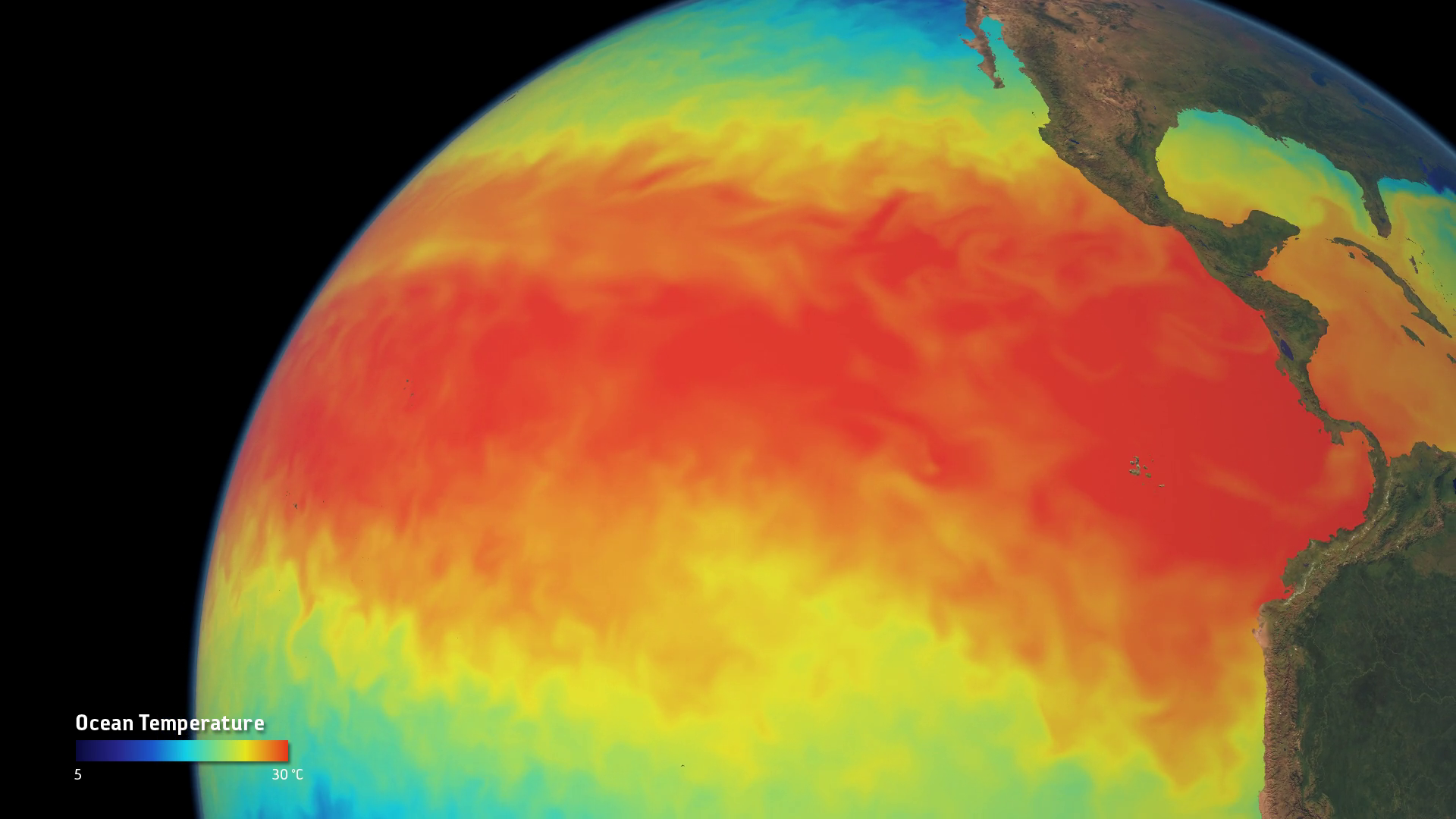
Access the video
Built by ESA and operated by Eumetsat, the Copernicus Sentinel-3 mission is unique in delivering measurements of global sea-surface temperature as well as sea-surface height from the same satellite platform.
The mission comprises two identical satellites, each carrying the same suite of instruments – one of which is the Sea and Land Surface Temperature Radiometer, which measures global sea-surface temperatures every day to an accuracy of better than 0.3 K.
The other is a radar altimeter that measures sea-surface height, significant wave height and wind speed. In addition, its imager, called the Ocean and Land Colour Imager, allows scientists to study the biological signatures in the ocean that are modified by El Niño.
Sentinel-3’s radiometer is used by the Committee on Earth Observation Satellites within its Sea Surface Temperature Virtual Constellation for a better understanding phenomena like El Niño and La Niña events, and ocean currents and heat exchange between the ocean and atmosphere.
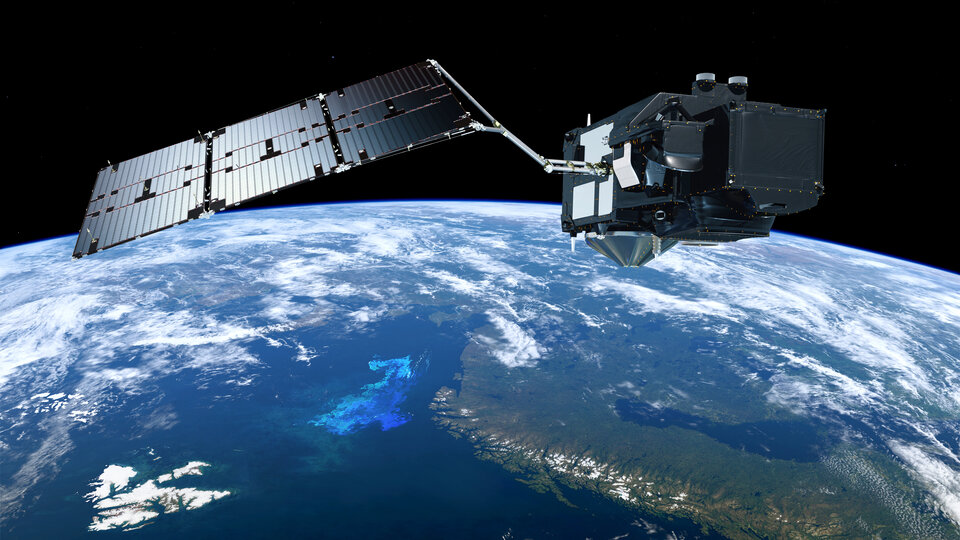
Sentinel-6 is the reference altimeter used to homogenise other satellite altimeter data to provide measurements of sea-level rise every 10 days.
Importantly, data from both missions are delivered in near-real time.
ESA currently building a further two Sentinel-3 satellites, Sentinel-3C and Sentinel-3D, to ensure continuity of such measurements. Looking to the future, ESA is also developing the follow-on Copernicus Sentinel-3 Next Generation mission.
A second Sentinel-6 satellite is currently in storage and is due for launch in the next few years to maintain the sea-level record.
Since sea-surface temperature is an important essential climate variable, ESA’s Climate Change Initiative also feeds in Sentinel-3 data to its Sea Surface Temperature Project.
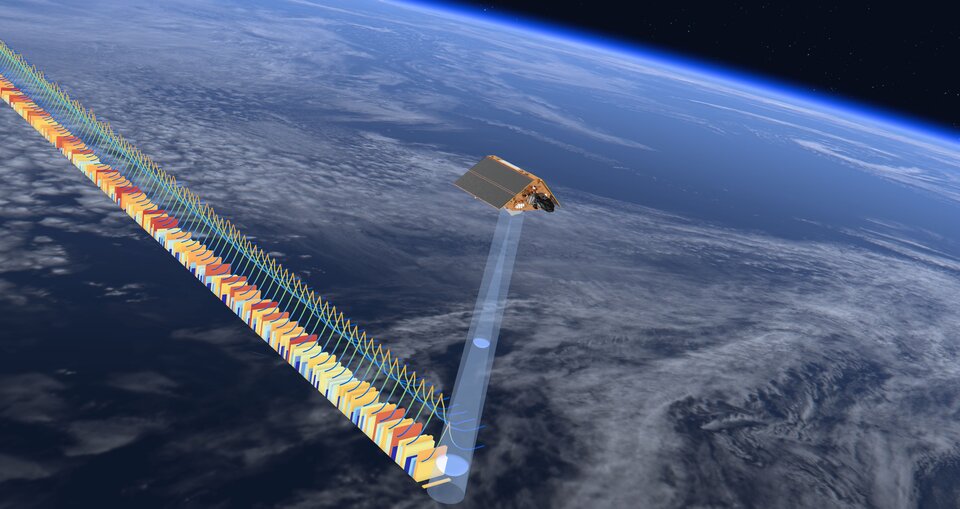
The future Copernicus Imaging Microwave Radiometer mission is set to provide all-weather high-resolution sea-surface temperature measurements. In addition, the Copernicus Land Surface Temperature Monitoring mission will provide very high-resolution sea-surface temperature data in coastal zones.
In short, the Copernicus programme is well-prepared to continue monitoring our oceans well into the future.
Warming oceans are indeed a worry, and now with an El Niño on the horizon, the world is braced for the impact it will have.
El Niño is likely to affect more than 60 million people, particularly in eastern and southern Africa, the Horn of Africa, Latin America and the Caribbean, and the Asia-Pacific region.
Severe drought and associated food insecurity, flooding, rains, and temperature rises due to El Niño can cause a wide range of health problems, including disease outbreaks, malnutrition, heat stress and respiratory diseases.
“Satellites orbiting Earth, now and in the future, not only those monitoring our oceans but measuring many different aspects of our planet, are more important than ever. They provide hard evidence for science and for decision making to protect society,” added Dr Donlon.
Quelle: ESA
